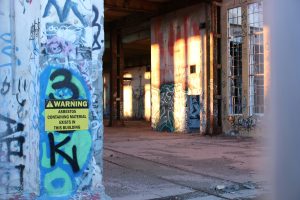Asbestos has been banned in Singapore for 35 years. But the nation continues to experience more cases of malignant mesothelioma, a type of cancer caused by the mineral. The number has increased from five in the early 1980s to 110 in 2019.
Few young people today would be aware of asbestos and its toxic legacy.
Asbestos is a silicate mineral composed of fibers that are heat resistant. These properties make it ideal for fire-retardant coatings, and it was used widely in the construction and shipping industry worldwide up until the 1990s.
Asbestos products include brake pads, gaskets, joint compounds, and roofing materials. Many older buildings contain asbestos in adhesives, flooring, insulation, plumbing, and roofs. Some consumer goods such as appliances and cosmetics products also contained this poison.
This was before researchers exposed the health hazards of its use, resulting in progressive bans in more than 50 countries beginning in the 1970s. Exposure to asbestos causes asbestos-related diseases such as asbestosis, lung cancer and malignant mesothelioma. Malignant mesothelioma is a rare cancer affecting the lining of the lungs and abdomen. It can take decades to show up after a person is first exposed to asbestos. It is almost always fatal with a short survival period from diagnosis to death.
Workers exposed to asbestos remained healthy for much of their lives with symptoms such as shortness of breath and chronic coughing developing only when they were much older. Victims were usually exposed at work with the largest number of cases coming from the marine, asbestos manufacturing, and construction industries. Asbestos exposure occurs when the material releases fibers into the air which are inhaled. These fibers lodge deep within the lung or abdominal linings and cause repeated inflammation and scarring over a person’s lifetime. Eventually, this can result in malignant mesothelioma.
The long period for malignant mesothelioma to surface presents significant implications for workers’ compensation. Asbestosis — inflammation of the lungs due to asbestos fibers — and malignant mesothelioma are listed as compensable occupational diseases in Singapore. However, the link between asbestos and cancer must be proven before government payouts can be made. Of the 394 cases reported to the Singapore Cancer Registry, only 94 were confirmed as occupational by the Ministry of Manpower.
This is due to the difficulty in obtaining a detailed work history of a patient, particularly as newly diagnosed cases tend to involve elderly individuals who may have worked at multiple jobs across various industries over decades. A study found that the mean age at diagnosis in Singapore was 51 years in the early 1980s, rising to 72 years in the late 2010s. Even when a potential source of exposure is identified, proving it is complicated as many of these workplaces no longer exist.
Singapore’s malignant mesothelioma cases have also shifted across industries over time. Early cases primarily stemmed from the asbestos manufacturing sector, but as that industry shut down, more cases emerged from the shipbuilding and construction industries. Singapore’s shipbuilding history means asbestos was widely used in older vessels and workers in ship repair are at continued risk.
The construction sector is also at risk as renovation or demolition work on older buildings can release asbestos fibers, posing a danger to both workers and the public if precautions aren’t taken.
The lessons from the Singapore experience are applicable to many other countries. Key recommendations include the need for greater public awareness of asbestos as a killer, stronger regulatory frameworks and improving protections for workers in at-risk industries.
Understanding the risks associated with asbestos and taking steps to avoid exposure is crucial for preventing cancer among workers. Regular screenings and safe handling practices for those in high-risk industries can make a difference.
Singapore’s proactive regulatory approach offers lessons on mitigating environmental risks and protecting public health via the need for prevention, regulation and support for affected individuals.
Malignant mesothelioma’s silent threat serves as a stark reminder of the long-term impacts of industrialization and underscores the need for continuous attention to environmental health and safety.
Despite Singapore’s efforts, new cases will continue to surface due to the disease’s ability to go undetected for decades. The effects of asbestos exposure don’t just disappear with a ban; they demand continuous attention to safety practices as well as healthcare support.
Originally published under Creative Commons by 360info™.

































